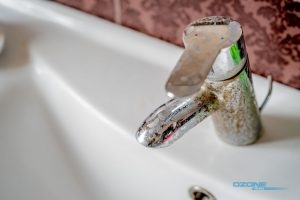 Pure drinking water has no taste. But supplies will quickly absorb such elements as iron and sulfur, giving it an unpleasant and metallic taste. Metal is much more present in drinking water than most even realize. Though rarely found in volumes any greater than 10mg/L, even trace amounts of sulfur and iron could greatly alter the smell and flavor of your water.
Pure drinking water has no taste. But supplies will quickly absorb such elements as iron and sulfur, giving it an unpleasant and metallic taste. Metal is much more present in drinking water than most even realize. Though rarely found in volumes any greater than 10mg/L, even trace amounts of sulfur and iron could greatly alter the smell and flavor of your water.
And just because your supply comes from city water doesn’t mean your water is free from metals. True the majority of iron present in household drinking water comes directly from well water. But even city water supplies your home with iron-containing water. This has to do with corrosion present in water lines, typically in older cities.
And iron presence has a much greater impact on water supply than altering the flavor. Its presence will actually leave orange, rusty stains and calcium deposits on everything your water contacts, including faucets, sinks, toilets and tubs. These impurities have a negative impact on everything from the cleanliness of your clothes to the spots on your dishes. Most importantly, iron deposits may even harbor harmful bacteria.
Meanwhile sulfur is not only incredibly smelly when in your drinking water, but it also quite damaging to your plumbing system. It produces a black slime which can actually corrode your water system. Keeping this and the presence of iron out of your home is imperative to the longevity and functionality of your plumbing.
Water filtering systems provide you cleaner and healthier drinking water that won’t cause deposits in your pipes. Iron and sulfur removal water systems can significantly reduce iron buildup and reduce hard water stains. Not to mention an adequate filtration system won’t leave your home reeking of rotten eggs.









